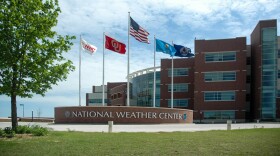AUDIE CORNISH, HOST:
Is climate change at least partly to blame for the tornadoes that swept across at least six states this weekend? That's a question many are asking, and it's one scientists are looking into. As NPR's Dan Charles reports, it's a hard one to answer.
DAN CHARLES, BYLINE: It was almost two decades ago when climate scientists started suggesting that as the planet warms up, we might see more tornadoes. They said we'll see more warm masses of air that rise quickly. They are the fuel for thunderstorms, sometimes producing tornadoes. But Jeff Trapp, a tornado expert and head of the atmospheric sciences department at the University of Illinois, was skeptical.
JEFF TRAPP: I just didn't like the arguments that they were making.
CHARLES: Trapp was thinking, tornadoes are rare, partly because they need other things, too, like vertical wind shear, winds that are faster and slower at different heights.
TRAPP: This supplies the spin to the thunderstorms, which then fosters the tornado formation.
CHARLES: So Trapp started working on this, trying to figure out the likelihood of tornadoes in a warmer world once you include all these factors in computer models. And what he and others have since found is the models show more of that warmer air to fuel thunderstorms but less of the wind shear that makes them spin. Balance out those forces, and it does look like a warmer world has somewhat more tornado-friendly conditions. Trapp says he's getting some new results from his models that indicate tornadoes in the warmer world at the end of this century could also grow more intense.
TRAPP: We tend to find when we do this that the tornadoes that form in these storms are more powerful.
CHARLES: Computer models are not the end of the story, though. Chiara Lepore at Columbia University's Lamont-Doherty Earth Observatory says so far, we're not seeing these shifts in the real world.
CHIARA LEPORE: The data that we have don't point to that yet.
CHARLES: The number of tornadoes year by year varies a lot. Michael Tippett at Columbia University says there's evidence that it's more common now for tornadoes to happen in bunches. There's also some evidence that they're shifting geographically away from the traditional Tornado Alley of Oklahoma and toward the Mid-South, although no one knows exactly why. It may have nothing to do with climate change. And Tippett says they are not seeing the overall increase in tornadoes that the models say you might expect.
MICHAEL TIPPETT: Now, why haven't we seen that? (Laughter) It is not laziness. The simple reason why everything with tornadoes is kind of more difficult than other types of weather is they're small.
CHARLES: That creates a couple of difficulties. Tornadoes are easy to miss. Records from many years ago are wildly incomplete, so it's hard to spot a trend. But the other problem is weather and climate models just are not good at predicting things as sudden and relatively small as a tornado. And they may be wrong. Maybe there's something else, some small-scale factor that these models can't catch that's affecting whether tornadoes form or not.
Dan Charles, NPR News. Transcript provided by NPR, Copyright NPR.









